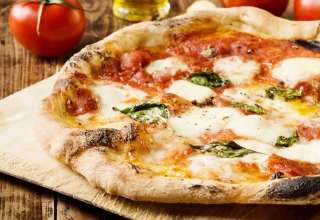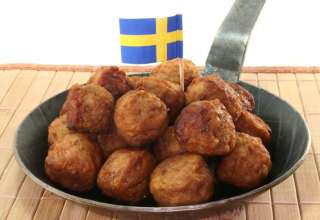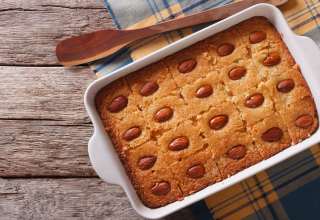The capital of Lebanon is steeped in glamour, intrigue and romance. The food is delicious, the welcome warm, and the wines are wonderful. Michael Karam finds out why
Lebanon’s capital should really be dead and buried. Beirut was a byword for mayhem during the 15-year Lebanese civil war, but even that sad chapter couldn’t kill off its seemingly indestructible reputation as one of the world’s great party towns and millennia-old trading entrepot, where everyone is welcome and everything can be had, at a price. In fact you’d be hard pushed to name a city whose name conjures up just the right blend of glamour, intrigue, sex and a pleasing soupçon of menace as well as unparalleled hospitality, sensational food and fabulous wine. It’s also loads of fun.
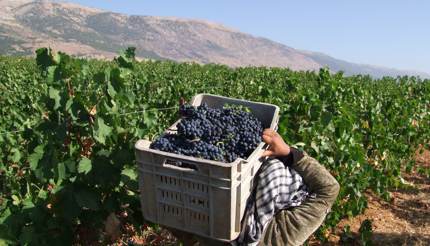
Foodie heaven
Throw yourself into Lebanese food at Tawlet, situated in an unremarkable cul-de-sac at the Burj Hammoud end of Mar Mikhael. But Tawlet is remarkable and a must for its rotating home-cooked regional mezze buffet. Meat dishes are served – this is Lebanon after all – but Tawlet is a vegetarian’s delight. Frikeh is the house specialty but such is the freshness of the produce that even dishes you may already know like tabbouleh, Fatoush and stuffed vine leaves are worth trying. Oh yes, the raw meat – think steak tartare – is perfectly safe. NB Tawlet is only open at lunchtime.
Goutons Voir is a popular bistro on Rue Abdel Wahab il Inglizi – try the frogs’ legs and duck confit – while just around the corner is Em Sherif, which offers the full nuclear Lebanese mezze experience with belly dancing in the evening. Try the soujok (Armenian sausage), Shankleesh (mature goat cheese with tomatoes, onion and oil) and Hummus with diced lamb cubes.
If you’re in the Downtown district, Le Petit Gris, behind L’Eclole Les Freres in Gemayzeh offers excellent French cooking and a thoughtful wine list, while Casablanca (owned by bag designer Johnny Farah) on the seafront at Ain El Mreisseh in West Beirut is a must for weekend lunch – try it all if you can, but the grilled octopus and fish of the day never disappoint.
Outside Beirut, head to Jammal seafood restaurant in the northern fishing village of Batroun and ask for a table in the sea so you can literally fall off your chair for an afternoon swim. Failing that a waiter will bring you a shisha. Once sated, head off to the nearby Pierre and Friends beach bar order a massive gin and tonic and you won’t want to leave.
If you’re in the ancient city of Byblos, go to Bab el Mina – the sardines are always good – while if you happen to be in the Bekaa Valley, Chez Charles in Zahle is great for winter dining – try the snails, Batrakh (cured fish roe) when they are in season and the maqanek (wild pork sausage) – while Tawlet Ammiq offers the same healthy eating experience as Beirut but with spectacular views across the Bekaa Valley.
Beirut Bars
The younger, more bohemian, crowd will gather in Gemayzeh and Mar Mikhael Districts in East Beirut. Start with a martini in Torino Express on Rue Gouraud and then have a vodka gimlet three doors down at Dragonfly before heading east down to Behind the Green Door (named after the 1972 classic feature length porn movie starring Marilyn Chambers) at the point where Gemayzeh ends and Mar Mikhael begins and then carry on to Internazionale and end up at Anis which has a wide selection of araks and absinthes. A more sedate evening might begin at the roof top bar of the Albergo Hotel on Rue Abdel Wahab il Inglizi and then end up at the venerable Pacifico on nearby Rue Monot where you must try the mojitos. If malt whiskies are your thing, the Phoenicia Hotel has the most extensive range in the country and if you want to pair it with a cigar then the cigar lounge at Le Gray is the place to hobnob with Lebanese politicians enjoying some down time.
Lebanese wine
Lebanon really should make the world’s sexiest wine. It’s climate is perfect for wine grapes, and it has a winemaking history that goes back to early man (indeed the bronze age Phoenicians would later ship their wines to the rest of the then civilised world) and most importantly it has superb winemaking conditions, notably in the mysterious and magical Bekaa valley.
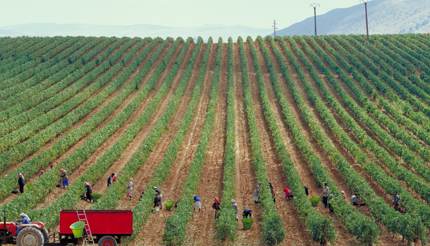
The Bekaa
The Bekaa is in fact a plateau that sits at 1,000m with the sides of the Lebanon and Anti Lebanon ranges extending up to over 2000 meters. This means that although Lebanon has a hot climate country, the height at which its vines can be planted – the highest are a shade under 2000 meters – offers compensating cooler, more nurturing conditions, especially at night when the temperature can drop by up to 18 degrees.
Lebanese reds are typically powerful but possessing defined fruit characteristics and good acidity, while the whites and rosés have a freshness and complexity that belie their hot climate origins.
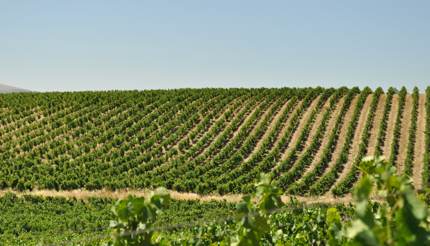
Another asset is scarcity. Lebanon only makes 9 million bottles (compare that to Chile which sends over 100 million bottles to the UK alone each year) so there’s not that much of it to go around. And lastly in the iconic Chateau Musar it has an ambassador is feted among its followers as one of the great wine of the world.
Close-up to conflict
But the Middle East wouldn’t be the Middle East if there weren’t a few obstacles. Lebanon’s winemakers have learnt to go it alone, often in times of political instability and war. The Bekaa Valley, where 95% of the country’s wine is made, abuts the Syrian border so not only is it close to a country in conflict, it is also the first stop of the millions of refugees who have fled the fighting and who have made their home in the Bekaa.
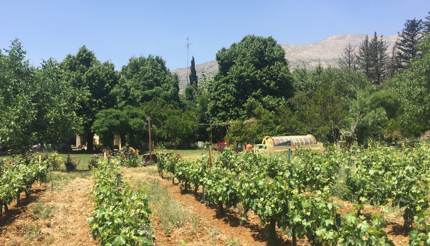
So what’s grown? Lebanese winemakers, for the time being at least, are not burdened by draconian wine laws or a complex appellation system so they can use whatever grapes they want. This makes for some unique and exciting blends. Lebanon is a former French colony so the most common varieties and styles reflect the wines of Bordeaux, Rhone and Southern France: the most popular black grapes are Cabernet Sauvignon, Syrah and Cinsault, and there’s a lot of Merlot, Grenache, Carignan, Cabernet Franc and other varieties. Whites are Chardonnay, Sauvignon Blanc, Viognier and Muscat – with Riesling, Sémillon, Clairette and Bourboulenc, and watch out for the indigenous Obeideh and Merweh, which are rapidly gaining in popularity.
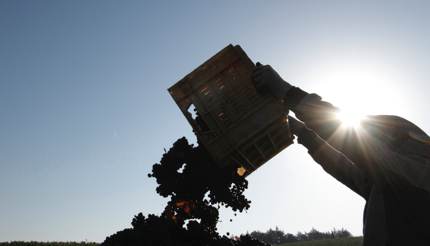
Château Musar is the most famous producer, while Château Ksara and Château Kefraya have established themselves as Lebanon’s biggest wineries but smaller producers have also made an impact since the early 90s. Look out for Massaya, Château St. Thomas, Domaine des Tourelles, Domaine Wardy, the super-modern IXSIR, Château Marsyas, Domaine de Baal, Château Qanafar, Château Khoury and Château Ka.
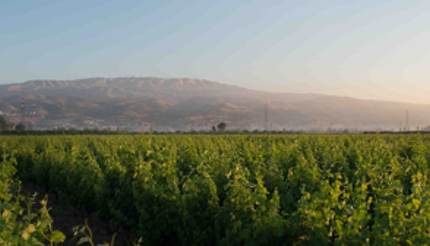
There is also regional diversity. The Bekaa valley may still be the centre of Lebanese winemaking, but Lebanese producers are now farming in different climates within the country. The northern region of Batroun now boasts eight wineries, while Mount Lebanon and the South have also demonstrated that they can grow excellent wine grapes.
Six of the best
Domaine des Tourelles – Vieille Vigne Cinsault (Cinsault) Lebanon’s first Cinsault varietal layered with the the succulence and spice of the Bekaa Valley
Massaya – Le Colombier (Cinsault, Grenache Noir, Syrah and Tempranillo) Chateauneuf-du-Pape comes to the Levant: A powerful concentration, fruit and spice.
Château Kefraya – Comte de M (Cabernet Sauvignon and Syrah) The first Lebanese wine to step out of Chateau Musar’s Shadow. A favourite of Robert Parker
Chateau Marsyas – Blanc (Sauvignon Blanc and Chardonnay) Sexy and stylish. Lots of well defined fruit, good mouth weight and quite sublime freshness.
Château Ksara – Blanc de Blancs (Semillon, Sauvignon Blanc and Chardonnay) An intriguing blend with lots going on and one of the most versatile food wines in the Lebanese canon
IXSIR– Altitudes Rosé (Syrah and Caladoc) Lebanon has so many quality rosés from which to choose. Altitudes from Ixsir is fresh and fruity with hints of white pepper and eminently quaffable.
Arak
Arak is Lebanon’s national drink, an aniseed-based eau de vie, and one of the world’s oldest spirits. Banish thoughts of ouzo or even the more industrial raki from Turkey: Lebanese Arak is the lodestone of Mediterranean firewaters. Arak is powerful – around 57% ABV – and flavoursome and absolutely the only drink with which to eat mezze as it will clean the palate after each dish. All the major wineries make it. Try Kasrak by Château Ksara; Brun by Domaine des Tourelles or Arak Rif, but essentially they’re all good.
Michael Karam is the author of Wines of Lebanon and Arak and Mezze: the Taste of Lebanon
Take a look at our Lebanon travel guide for more.


